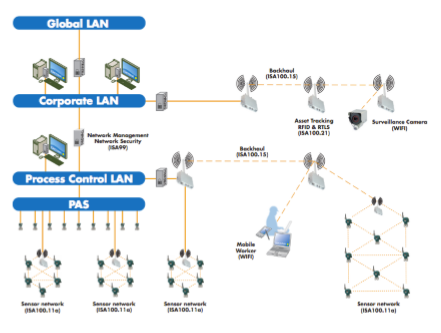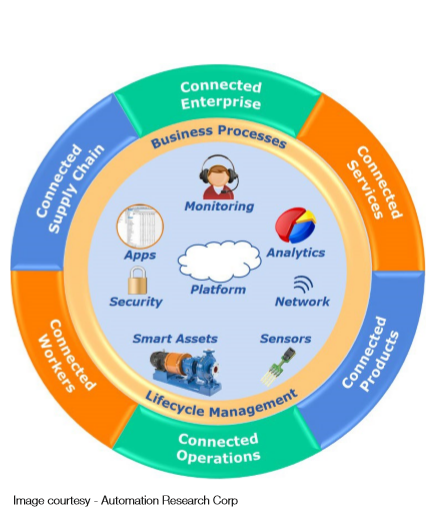Converged Networks – a Peek into the Future
What will it take? Will Operational Technology (OT) disappear as we know it today – morphed into the Informational Technology (IT) space where both areas are driven by the same disruptive technology of the IoE (Internet-of-Everything)? A transformation of the industrial network is in full swing. Sometimes referred to as the Industrial Internet of Things, Industry 4.0, or Digitization, it is clear industrial firms have begun to use available technologies to completely revamp their business model. This realization by the industrial professionals is key in moving the IT/OT convergence to reality.
What Is a Converged Network?
Network convergence is the conjuction of all networking services for voice, data, and video in a single network. Instead of providing a separate network for all these services, convergence in networking allows businesses to use just one network for all communication, consolidating multiple IT components to lower costs and increase service availabiltiy.
The benefits of a converged network
The Industrial Internet of Things (IIoT) is a Sensor focused network. It is designed to be completely integrated into both Control focused networks at the plant level and Data focused networks at the enterprise level. Because the IIoT is designed to maximize the amount of data throughput to the enterprise and the Control System, many IIoT sensor networks are connected both to the Cloud (for asset management, simulation and modeling, and similar non real-time tasks) and to the Control System for real-time bidirectional control, and with enterprise requirements being served by the Cloud. This means that each data point may have two or more destinations in the network.

We should expect the complexity of IIoT networks, with virtualization and Cloud Computing, along with both hardware and software as services to become greater, and that means that the need to continuously monitor and run diagnostics on these networks will be correspondingly greater with increased complexity.
More about the benefits of network virtualization
Just how complex will IIoT networks become? Current numbers of sensors at typical process plants cluster around 40,000 sensors. The IIoT will increase those numbers exponentially to something over 250,000 sensors per plant. Each of those sensors will be producing near real-time data at an update rate of four times a minute, or 250 milliseconds per datum. That means each sensor will be producing over 5,000 data points per day. That’s 1.44 billion data points per plant, per day. Each of those sensors needs to be monitored and diagnostically checked for proper operation as part of the network.
It is essential that the IT/OT network administrator have tools that allow true and total visibility of the network in real-time, permitting the network administrator to view, review, and perform analyses on the data at any point. Diagnostics and alerts are capable of telling the administrator when a sensor or a sensor network goes down, so that emergency service can be assigned and performed.
Converged Networks – a Peek into the Future
Statseeker suggests that every enterprise network will be made up of sub-networks that are either Data centered, User centered, or Sensor centered. Each of these networks will interface directly with all other networks in the enterprise.
This will make the job of the network administrator significantly more difficult than it is today, with mostly independent networks in the enterprise or on the plant floor. These networks will need to be subsumed together to provide the benefits that Big Data, analytics, the Internet of Things, and the Cloud will provide.
Network monitoring solutions will become even more essential for the proper administration of these highly complex networks.

When planning for the future, look for network tools that will enable you to poll the entire network in less than 60 seconds. No longer will you be able to only look at ‘mission-critical’ devices because your network infrastructure monitor can only poll a network every 5 minutes or so. You must know what all devices are doing – or not doing – on your network, all the time. Fast polling will be a mandatory feature. And the growth of networks will demand that the standard be less than 60 second polling for your entire network.
Scalability will be another key factor. Network solutions that easily scale to meet the explosive growth rate of your network, and do so, in a CAPEX/OPEX friendly way is crucial.
And finally, it will no longer be acceptable to average the data – granularity of data for quick network forensics will be the norm. Your network monitoring solution must be able to provide original granularity to all of your data.
Converged Network Challenges
To understand better what current thought leaders are calling the IT/OT convergence, read our full whitepaper. It explains the differences as well as similarities between IT and OT, addresses the challenges in convergence and provides insight into areas that both IT & OT professionals must understand to converge in a way that truly makes 1 + 1 = 3.
 Frank Williams, CEO of Statseeker, a global provider of innovative network monitoring solutions for the IT enterprise and OT industrial market space. Frank holds a BSEE, augmented by many post graduate courses in management, leadership and technology. The original version of this post can be accessed here here.
Frank Williams, CEO of Statseeker, a global provider of innovative network monitoring solutions for the IT enterprise and OT industrial market space. Frank holds a BSEE, augmented by many post graduate courses in management, leadership and technology. The original version of this post can be accessed here here.



